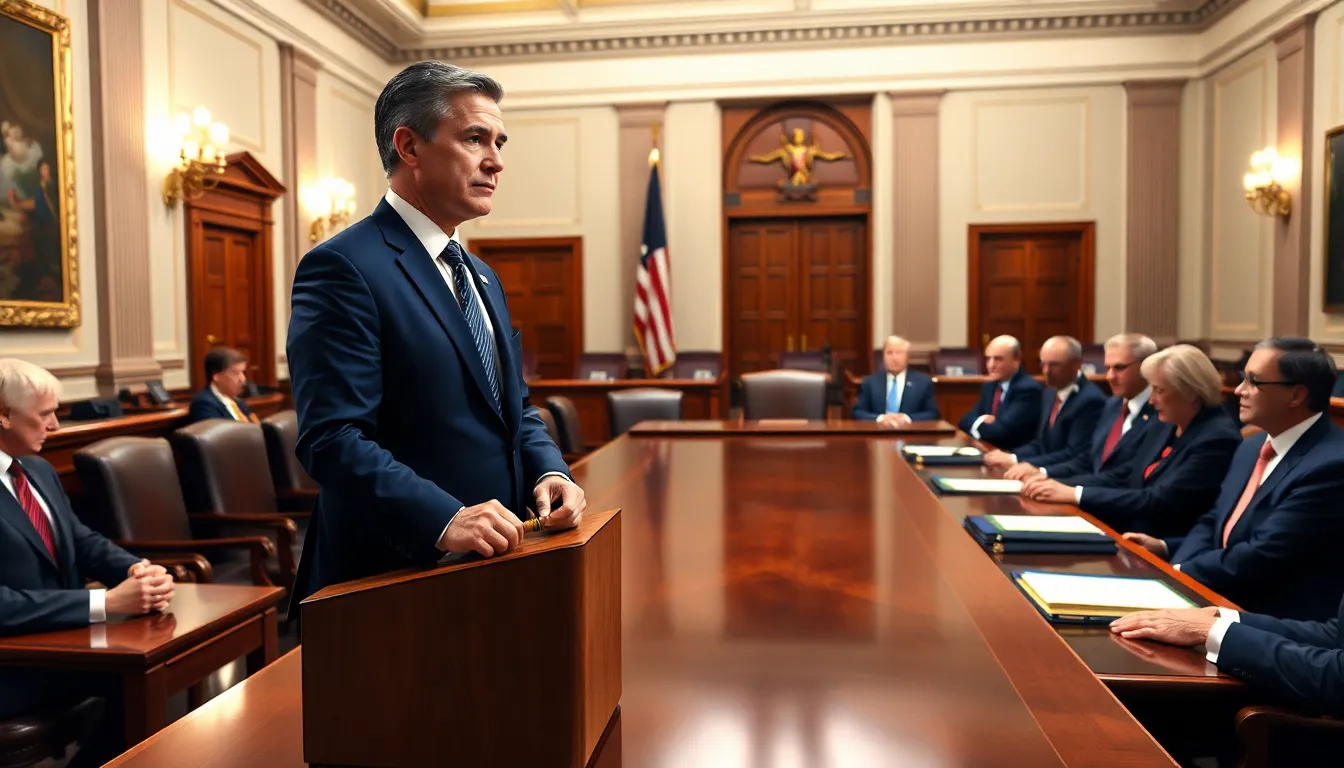The role of a vice president often sparks curiosity about its true scope and significance. Many people see the title as merely a stepping stone to the presidency, but the responsibilities and impact of a vice president extend far beyond that perception. From legislative duties to diplomatic engagements, vice presidents play a crucial role in shaping policy and supporting the administration’s goals.
Understanding what a vice president can do reveals the multifaceted nature of this position. They act as a key advisor to the president, represent the nation on the global stage, and sometimes take the lead on critical issues. This article explores the various functions and powers of a vice president, shedding light on how they contribute to the effectiveness of the executive branch.
Table of Contents
ToggleOverview of Vice Presidential Role
The vice president holds a vital position within the executive branch, performing a range of functions that extend far beyond a mere stepping stone to the presidency. This role encompasses several responsibilities critical to the administration’s functions.
Historical Background
The vice president’s role has evolved since its establishment in 1789. Initially, the position primarily served as a backup to the president with limited responsibilities. Over time, vice presidents like Thomas Jefferson and John Adams shaped the role into a more influential one, participating actively in policy discussions and legislative processes. The 20th century marked a turning point, as vice presidents began to engage more directly in diplomatic missions and strategic decision-making, bridging the gap between the legislative and executive branches.
Current Relevance
In the modern political landscape, the vice president plays an essential part in governance and public policy. They often oversee initiatives that reflect the administration’s priorities, working on key issues such as healthcare, education, and climate change. The vice president also acts as a liaison between different political factions, enhancing collaboration within Congress. Their involvement in international relations emphasizes their role as a chief diplomat, representing national interests globally. As a result, the vice presidential position remains crucial for effective leadership, contributing significantly to the administration’s overall success.
Key Responsibilities of a Vice President

Vice presidents hold significant responsibilities that extend beyond ceremonial functions. Their roles encompass legislative duties and executive actions critical for the effective functioning of the government.
Legislative Duties
Vice presidents play a vital role in legislative processes. They preside over the Senate, facilitating discussions and ensuring order during debates. They cast tie-breaking votes when necessary, influencing key legislation. Additionally, vice presidents often engage with senators to build support for administration priorities. They contribute to developing policy and strategy, providing a crucial link between the executive and legislative branches.
Executive Actions
Vice presidents are key advisors to the president, often managing specific portfolios or initiatives. They enact and oversee executive orders, ensuring alignment with the administration’s goals. Additionally, vice presidents represent the administration at official events and conferences, enhancing diplomatic relations. They also participate in decision-making processes on critical issues, contributing their insights and expertise to shape policies that impact national and global affairs.
How a Vice President Supports the President
A vice president supports the president through collaboration, communication, and seamless transitions in leadership. This role involves executing various responsibilities that enhance the executive branch’s functionality.
Collaboration and Teamwork
Collaboration defines the relationship between the vice president and the president. They frequently engage in strategy sessions, discussing national priorities and policy directions. Vice presidents often coordinate with cabinet members and agency leaders, ensuring alignment with the president’s agenda. By facilitating teamwork, vice presidents help cultivate an environment that encourages innovation and responsiveness in governance. This partnership strengthens the administration’s effectiveness and enhances decision-making processes.
Filling in During Absences
Filling in during absences represents a critical responsibility of the vice president. When the president is unavailable or incapacitated, the vice president assumes the role of acting president. This transition ensures continuity in governance and maintains stability within the executive branch. In such instances, the vice president can address urgent matters, sign legislation, and uphold the functions of the presidency. This capability underscores the vice president’s importance as a reliable backup leader, ready to step in when necessary.
Influence on Policy and Public Opinion
A vice president plays a vital role in shaping both policy and public opinion, acting as a significant advocate for the administration’s agenda. Through strategic communication and active engagement, the vice president influences perceptions on various national issues.
Advocacy and Representation
Vice presidents advocate for key policies and initiatives within the administration. They represent the administration in public forums, congressional hearings, and community events, ensuring that the president’s objectives resonate with the public. By meeting with stakeholders, interest groups, and constituents, vice presidents gather insights and relay important feedback, shaping legislative priorities. They also champion specific causes, such as healthcare reform or climate action, often leading initiatives that align with the administration’s vision.
Media Engagement
Media engagement serves as a crucial aspect of a vice president’s role. They utilize various platforms to convey important messages, respond to public concerns, and build support for administration policies. Engaging in interviews, participating in town halls, and leveraging social media channels enhances transparency and fosters a connection with citizens. Through effective messaging and communication strategies, vice presidents can sway public opinion, rally support for initiatives, and address misinformation, reinforcing their influence in the political landscape.
The vice president’s role is pivotal in shaping the direction of the administration and influencing national policy. Through their diverse responsibilities they not only support the president but also engage with Congress and the public to advocate for key initiatives. Their ability to navigate complex political landscapes and maintain continuity in governance underscores their importance in the executive branch. As the role continues to evolve the vice president remains a crucial player in ensuring effective leadership and fostering collaboration within the government. This multifaceted position is essential for addressing the pressing challenges facing the nation today.


